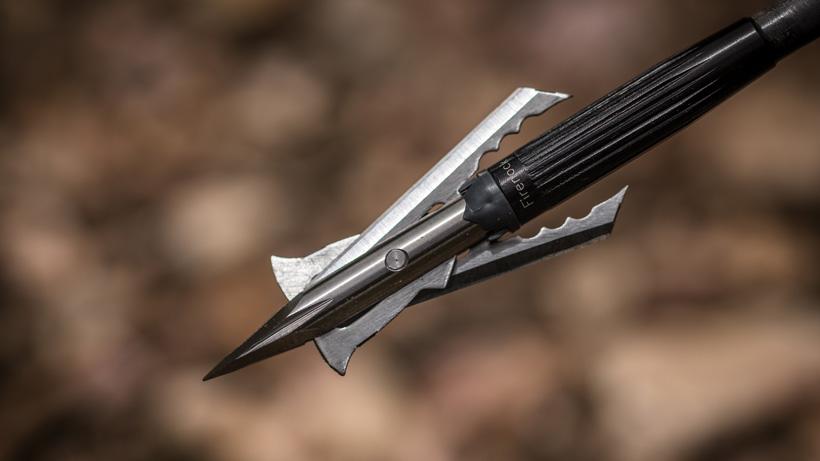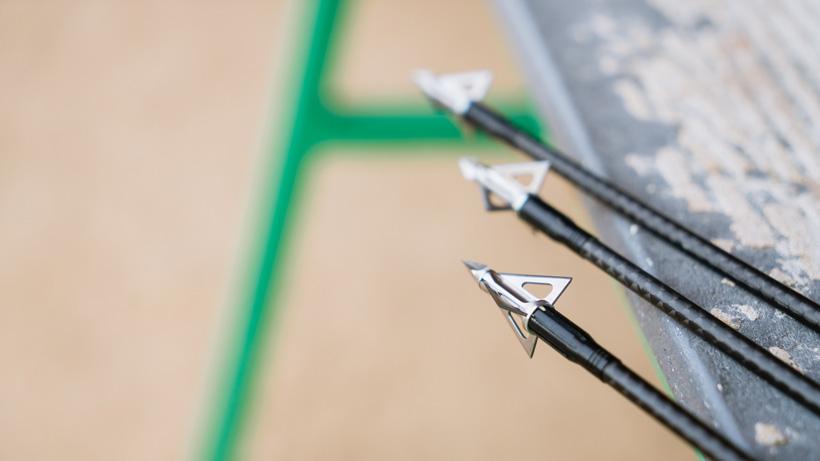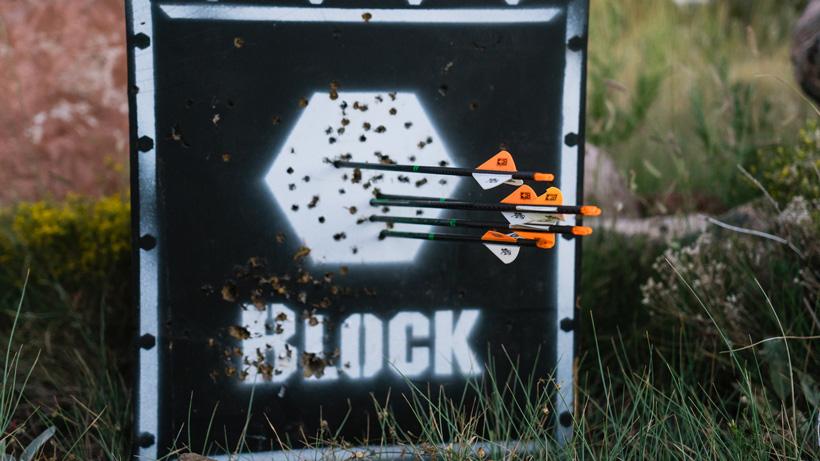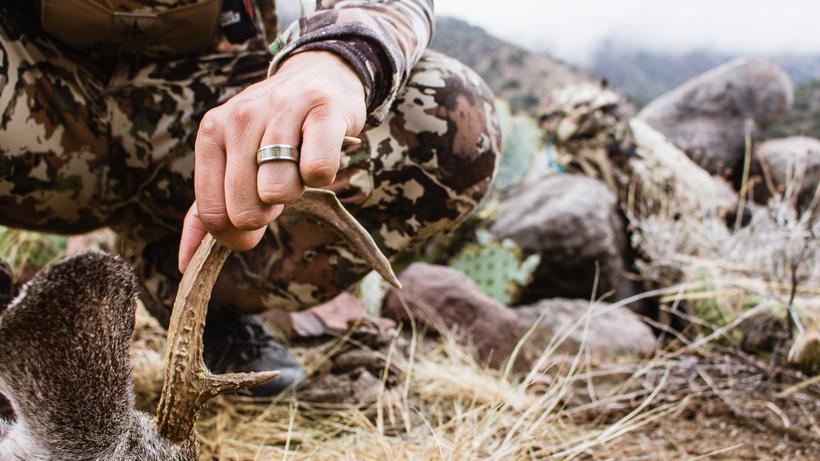




Rage Hypodermic Trypan expandable blade broadhead.




The fall hunting seasons have come and gone and, now, our eyes are on the future. The 2019 spring seasons are upon us and we are already seeing turkeys and bears loading up our social media feeds along with a plethora of smiling hunters. Many of us at this point are probably shooting our bows like mad and tweaking our setups here and there in preparation for these seasons. I think it’s important to reflect on the past year and note any flaws we may have noticed in us or our gear. One of those items on that list is usually broadheads. With so many different heads on the market, there really is a broadhead for everyone. One of the most common questions, though, is, “Should I use a fixed blade or an expandable?” The answer is going to differ depending on whom you ask. Let’s dive into each of them to help you better decide which broadhead is right for you.
Some people love them and some people hate them. However, you cannot deny the devastation that an expandable blade broadhead packs. Huge wound channels and some downright grotesque blood trails—all with minimal to no adjustments needed when switching from shooting your field points to broadheads. Oh, yes. Field point accuracy in a deadly package. They are designed to be low profile as they fly through the air or rest in your quiver. Once they hit an animal though, this triggers the blades to expand and start cutting. There are many designs on the market, but the overall concept remains. When one of these heads passes through an animal it’s like turning on a faucet—if you put them in the right area, of course.
So, what’s not to love? Well, the biggest thing is that they are mechanical. Things that are mechanical are open to failure. It might be 99 times out of 100 that it doesn’t fail, but that one time might be when the head is trying to make its way through an animal. Many folks are completely fine with this and think the pros outweigh the cons, but some just don’t want to take that chance. I get it. We put so much into our hunts between practice, money and time dedicated to scouting. To leave your hunting fate in the hands of something that could fail is just not something some hunters want to mess with. Whether the broadhead fails or not, you might also be looking at an issue with penetration. In order for these blades to open up, there is some kind of force that needs to do so. Because of this, you will lose a bit of momentum traveling through the animal. On the way through, you face another possible issue. That is hitting bone. These blades are usually not made of the most durable materials and might even break. I’ve had a few break myself even on smaller animals like javelina.
This type of broadhead is tried and true and, really, what started it all. Hunters have been hunting with fixed blade broadheads since the dawn of bowhunting. Even the arrowheads of the past were essentially fixed blade heads. No worrying about if the broadhead will fail and not open. No moving parts or adjustment screws. Just pure unadulterated devastation as they slice their way through vitals across the globe. These are going to offer the best performance in terms of penetration when compared to a mechanical.
There is nothing to hold them up on their way through an animal—except the animal itself. Fixed blade broadheads come in all sizes and shapes. From smaller cutting diameter heads to aid in arrow flight all the way up to big nasty heads looking for a good time. More animals have probably fallen to fixed blades than any other head. So, why stray from what has always worked? If it ain’t broke, don’t fix it, right? Some might say otherwise.
As humans, we are always striving for progression. Finding the areas that we lack in and trying to fill in the blank spots is something we never stop doing. Believe it or not, there are some downsides to shooting a fixed blade head. One of them is cutting diameter. While there are some fixed blades out there that are on the bigger side, they cannot be compared to that of a big mechanical. How big is too big though? How big of a hole do we really need? If you’ve ever been left with a minimal blood trail, you probably know where I’m going with this. The bigger the hole, the more room for blood to pour out of the animal, leaving us with an easier puzzle to solve. Another area where fixed blades might tend to lack in is arrow flight. Hunters will often have to sight in their bow again with fixed blades come season. This is arguable, in my opinion, because I truly believe a lot of the issues have to do with tuning. If the arrow isn’t coming out of the bow straight to begin with, then those fixed blades are going to catch more wind, thus making them hit in a different spot than your field points. With a mechanical, more times than not, you really don’t have to worry about such things. They are low profile just like your field points and fly very similar. So, the fixed blades might just be more touchy when it comes to arrow flight if you are comparing them to that of field points.
You should always stop and ask yourself, “What am I hunting?” There are certain tools for certain jobs, right? Some tools are more universal while other tools are more specialized for a certain task. I think the same way of thinking should be applied for selecting the right broadhead. For instance, it might not be the best idea to use a super low profile fixed blade on a turkey. Why? Turkeys have a very small kill zone, which doesn’t leave a whole lot of room for error. For that reason, you’d probably want a big mechanical to aid you there. Bears are another animal that you might be better off with a mechanical. They are notorious for not leaving good blood trails. Their fat paired with their hide oftentimes leaves us with little to no blood from time to time. For them, the bigger the hole the better. A deer, though? Different story for a different animal. They don’t have all of that hair to soak up the blood or the inches of fat reserves a bear has to plug a hole back up. If you are elk hunting, a fixed blade might be a better choice for you than a mechanical. Elk are big tough animals and the lack of momentum often paired with a mechanical could be a recipe for disaster. The same can be said for larger game like a moose. Do you see where I’m going here? Yes, you can absolutely use one broadhead for everything, but I think if you are looking to maximize your success, a more strategic approach might be better. There are loads of opinions on this, but sometimes different animals call for different heads and sometimes staples are better than nails. Sorry, that was the roofer in me coming out.
So, in the end, which one is better? Do you go with the tried and true fixed blade or with the mayhem left from a mechanical? The truth is that there are just too many variables to have a right answer for that right off the hip. I know people that regularly shoot mechanical heads into elk with success and will continue to do so. Other folks I know wouldn’t even consider doing such things. There are other factors as well to consider being draw weight, draw length, arrow weight, etc. All of these things make a difference in the end and might allow someone to use one head over the other while, for another person, that might not be the case. Evaluate your setup and your needs as a bowhunter. After that, the fun begins and your targets will never look the same with all of those broadheads flying through them. And, with any luck, those broadheads will be a different color at the end of the season. For another look at broadheads, you can check out my recent article on The lethal factors behind your broadheads.
Field point accuracy
Great blood trails
Affordable
Could fail
Not as durable
Loss of momentum potentially equals less penetration
Great penetration
Fail-proof
More durable (some can actually be reused)
Not as much cutting diameter
Potentially will have issues with arrow flight
Can get pretty pricey with some models